
 If you're a contractor grappling with deep soil stabilization challenges or looking to expand service offerings, Alchatek offers comprehensive support and training to elevate skills and expand business opportunities. Here's how the Alchatek team can assist you in enhancing your Deep Lock® soil stabilization capabilities:
If you're a contractor grappling with deep soil stabilization challenges or looking to expand service offerings, Alchatek offers comprehensive support and training to elevate skills and expand business opportunities. Here's how the Alchatek team can assist you in enhancing your Deep Lock® soil stabilization capabilities:
Skill Upgrades for Contractors
- If you're currently facing difficulties with deep soil stabilization projects, Alchatek provides the expertise to upgrade your skills and tackle these challenges effectively.
- For slab lifting contractors, incorporating the Deep Lock® process into your service offerings can be a significant step towards diversifying your business and increasing revenue.
Technical Guidance and Support
- Alchatek's technical support team is highly skilled in on-the-job applications of deep soil stabilization techniques.
- The team brings a wealth of experience, having successfully consulted on a wide range of projects.
- On-the-job training is available, offering practical, hands-on learning to ensure you are fully equipped to handle various stabilization scenarios.
Comprehensive Training Programs
- Alchatek offers training programs, which are designed to provide in-depth knowledge and hands-on experience in the latest soil stabilization techniques.
- Training programs are an excellent opportunity for contractors to learn directly from experts and gain valuable insights into the industry’s best practices.
Collaboration with Engineers
- Alchatek assists contractors in working with engineers. This includes providing education and specification assistance to ensure that engineers are well-informed about the Deep Lock® process and its benefits.
- The support team can help bridge the gap between contractors and engineers, facilitating smoother project execution.
Project Design Support
- This service ensures that your deep soil stabilization projects are well-planned, efficient, and effective.
- Alchatek experts can help you design your projects from the ground up, ensuring the best possible outcomes for your clients.
Contact Alchatek Today
If you’re looking to enhance your deep soil stabilization services or need expert assistance, reach out to Alchatek today. With comprehensive support, training, and vast experience, you can confidently tackle any soil stabilization challenge and grow your business.
Call 404-618-0438 or fill out this form to contact Alchatek now!



 This post features three case studies that highlight the versatility and effectiveness of the Deep Lock® process across a variety of applications.
This post features three case studies that highlight the versatility and effectiveness of the Deep Lock® process across a variety of applications.
 In the world of soil stabilization and concrete leveling, the choice of materials is as important as the technique used. Alchatek's Deep Lock® process utilizes a range of specialized structural polymers, each designed to cater to specific stabilization needs.
In the world of soil stabilization and concrete leveling, the choice of materials is as important as the technique used. Alchatek's Deep Lock® process utilizes a range of specialized structural polymers, each designed to cater to specific stabilization needs.
 The Deep Lock® process, a robust and effective method for soil stabilization, requires specialized equipment to ensure precision and efficiency. Here's a breakdown of essential equipment for Deep Lock® soil stabilization in cold weather:
The Deep Lock® process, a robust and effective method for soil stabilization, requires specialized equipment to ensure precision and efficiency. Here's a breakdown of essential equipment for Deep Lock® soil stabilization in cold weather:
 Deep Lock® is a specialized deep soil stabilization process developed by Alchatek. It involves injecting a structural polymer deep into the soil, where it expands and solidifies. This process enhances the stability and strength of the soil, making it an effective solution for various geotechnical challenges. One key feature of Deep Lock® is its ability to stabilize soil below the freeze/thaw line, making it particularly useful in cold weather conditions.
Deep Lock® is a specialized deep soil stabilization process developed by Alchatek. It involves injecting a structural polymer deep into the soil, where it expands and solidifies. This process enhances the stability and strength of the soil, making it an effective solution for various geotechnical challenges. One key feature of Deep Lock® is its ability to stabilize soil below the freeze/thaw line, making it particularly useful in cold weather conditions.
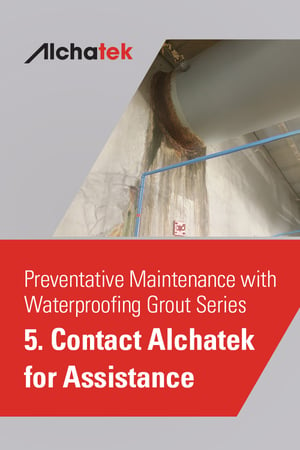 Alchatek's role in the fight against water damage is defined by expert technical guidance and specialized contractor referrals.
Alchatek's role in the fight against water damage is defined by expert technical guidance and specialized contractor referrals.


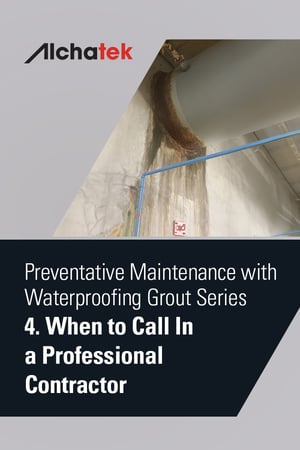 Water infiltration, even in its smallest form, can be a harbinger of more significant issues. The key is not to wait until the problem becomes extensive or recurrent but to seek professional assessment and intervention at the first indication of water presence.
Water infiltration, even in its smallest form, can be a harbinger of more significant issues. The key is not to wait until the problem becomes extensive or recurrent but to seek professional assessment and intervention at the first indication of water presence.
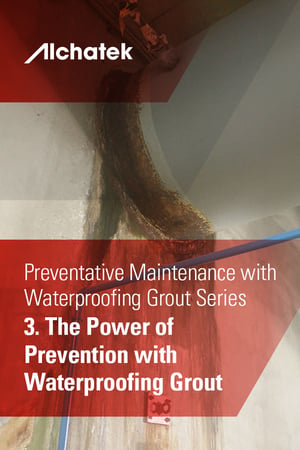 Polyurethane waterproofing grout is a type of sealant used extensively in construction and maintenance for its exceptional ability to prevent water ingress. It is a liquid polymer that, once applied, solidifies into a durable, water-resistant barrier. This grout is particularly effective in sealing cracks, joints, and other potential points of water entry in structures.
Polyurethane waterproofing grout is a type of sealant used extensively in construction and maintenance for its exceptional ability to prevent water ingress. It is a liquid polymer that, once applied, solidifies into a durable, water-resistant barrier. This grout is particularly effective in sealing cracks, joints, and other potential points of water entry in structures.
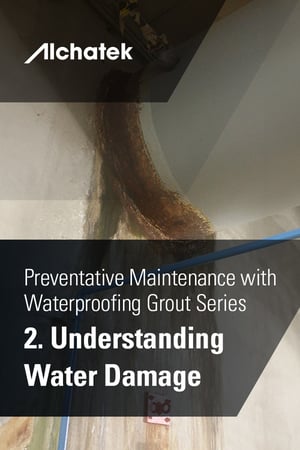 Water's destructive capacity stems from its ability to penetrate and alter the very materials that buildings are made of. Here are some key ways in which water inflicts damage:
Water's destructive capacity stems from its ability to penetrate and alter the very materials that buildings are made of. Here are some key ways in which water inflicts damage:
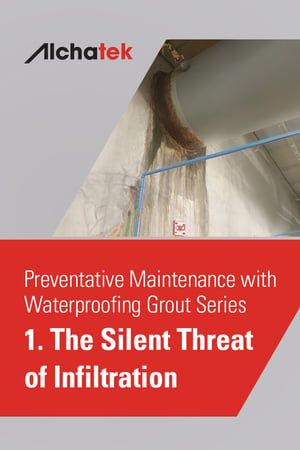 In the realm of property management and building maintenance, certain risks lurk unseen, often underestimated in their potential for destruction. Among these, water infiltration stands as a silent, insidious threat. Its capacity for causing extensive, sometimes catastrophic damage is not to be overlooked.
In the realm of property management and building maintenance, certain risks lurk unseen, often underestimated in their potential for destruction. Among these, water infiltration stands as a silent, insidious threat. Its capacity for causing extensive, sometimes catastrophic damage is not to be overlooked.